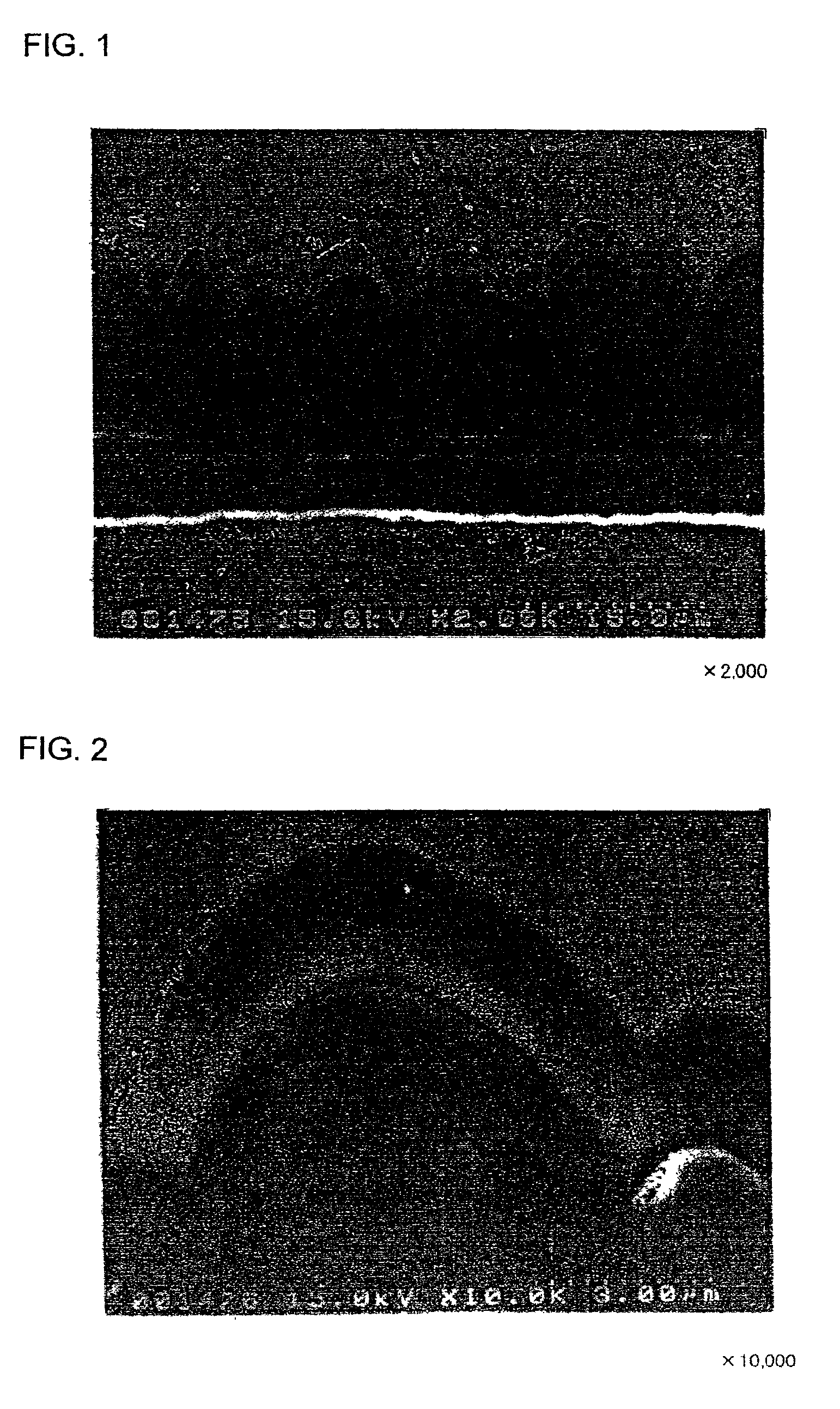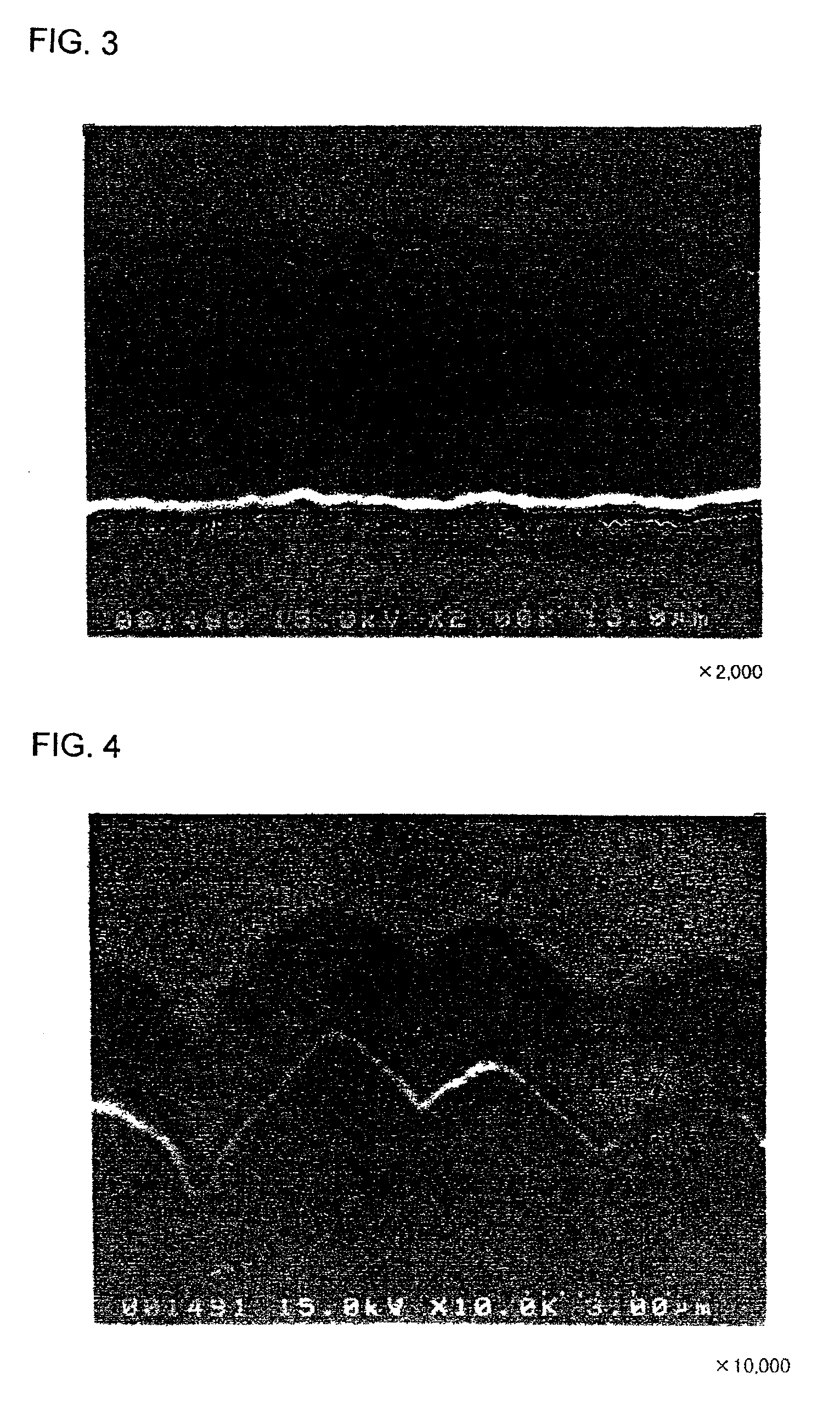Electrode for lithium secondary battery and method for producing the same
a lithium secondary battery and electrode technology, applied in the direction of negative electrodes, cell components, coatings, etc., can solve the problems of deteriorating the charge-discharge cycle characteristics, large volume expansion and shrinkage with charge and discharge, and silicon use has not yet been commercialized, and achieve excellent charge-discharge cycle characteristics.
- Summary
- Abstract
- Description
- Claims
- Application Information
AI Technical Summary
Benefits of technology
Problems solved by technology
Method used
Image
Examples
experiment 1
(Experiment 1)
[Production of Electrodes a1 and a2]
An Mo layer and a W layer having a thickness of 0.1 μm as an interlayer were respectively formed on the roughened surface of the electrolytic copper foil (thickness: 18 μm) having a surface roughness Ra of 0.188 μm in an argon (Ar) atmosphere by RF sputtering. The thin film formation was performed under the conditions of an RF power of 200 W, an Ar gas flow of 60 sccm, a chamber inner pressure of 0.1 Pa, and room temperature (not heated) as the substrate temperature.
Thereafter, a microcrystalline silicon thin film was formed on each of the Mo layer and the W layer by a CVD method, using silane (SiH4) gas as the material gas and hydrogen gas as the carrier gas. The thin film formation was performed under the conditions of an SiH4 flow of 10 sccm, an H2 gas flow of 200 sccm, a substrate temperature of 180° C., a reaction pressure of 40 Pa, and an RF power of 555W.
The microcrystalline silicon thin film was deposited to a thickness of 2 ...
experiment 2
(Experiment 2)
[Production of Electrodes c1 and c2]
An Mo layer and a W layer as the interlayer were respectively formed on rolled copper foil (thickness: 18 μm) having a surface roughness Ra of 0.037 m under the same conditions as those in the formation of the electrodes a1 and a2.
Thereafter, a microcrystalline silicon thin film was formed on each of the Mo and W layers under the same conditions as those in the formation of the electrodes a1 and a2. The resultant silicon thin film was cut into a 2 cm×2 cm piece together with the rolled copper foil, to obtain an electrode c1 with the Mo interlayer and an electrode c2 with the W interlayer.
[Production of Electrode d1]
An electrode d1 was produced in the same manner of the electrodes c1 and c2, except that a microcrystalline silicon thin film was directly formed on the rolled copper foil with no Mo or W layer therebetween.
[Measurement of Charge-discharge Cycle Characteristics]
Using the electrodes c1, c2 and d1 respectively as the working...
PUM
| Property | Measurement | Unit |
|---|---|---|
| thickness | aaaaa | aaaaa |
| surface roughness Ra | aaaaa | aaaaa |
| surface roughness Ra | aaaaa | aaaaa |
Abstract
Description
Claims
Application Information
 Login to View More
Login to View More - R&D
- Intellectual Property
- Life Sciences
- Materials
- Tech Scout
- Unparalleled Data Quality
- Higher Quality Content
- 60% Fewer Hallucinations
Browse by: Latest US Patents, China's latest patents, Technical Efficacy Thesaurus, Application Domain, Technology Topic, Popular Technical Reports.
© 2025 PatSnap. All rights reserved.Legal|Privacy policy|Modern Slavery Act Transparency Statement|Sitemap|About US| Contact US: help@patsnap.com



